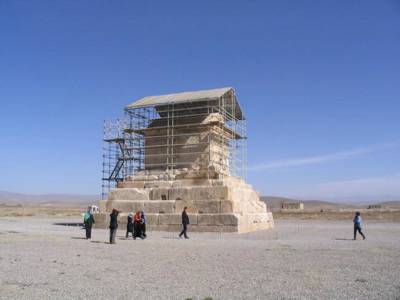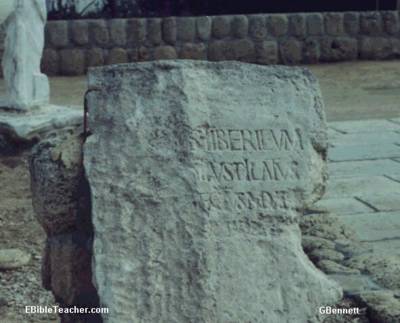
Obelisk of Shalmaneser III
Neo-Assyrian, 858-824 BCE
From Nimrud (ancient Kalhu), northern Iraq
The obelisk describes military achievements of this Assyrian king
The second register from the top includes the earliest surviving picture of an Israelite: the Biblical
Jehu, king of Israel, brought or sent his tribute in around 841 BCE. Ahab, son of Omri, king of Israel, had lost his life in battle a few years previously, fighting against the king of Damascus at Ramoth-Gilead (I Kings xxii. 29-36). His second son (Joram) was succeeded by Jehu, a usurper, who broke the alliances with Phoenicia and Judah, and submitted to Assyria. The caption above the scene, written in Assyrian cuneiform, can be translated:
"The tribute of Jehu, son of Omri: I received from him silver, gold, a golden bowl, a golden vase with pointed bottom, golden tumblers, golden buckets, tin, a staff for a king [and] spears."
The archaeologist Henry Layard discovered this black limestone obelisk in 1846 during his excavations of the site of Kalhu, the ancient Assyrian capital. It was erected as a public monument in 825 BCE at a time of civil war. The relief sculptures glorify the achievements of King Shalmaneser III (reigned 858-824 BC) and his chief minister. It lists their military campaigns of thirty-one years and the tribute they exacted from their neighbours: including camels, monkeys, an elephant and a rhinoceros. Assyrian kings often collected exotic animals and plants as an expression of their power.
There are five scenes of tribute, each of which occupies four panels round the face of the obelisk and is identified by a line of cuneiform script above the panel. From top to bottom they are:
- Sua of Gilzanu (in north-west Iran)
- Jehu of Bit Omri (ancient northern Israel)
- An unnamed ruler of Musri (probably Egypt)
- Marduk-apil-usur of Suhi (middle Euphrates, Syria and Iraq
- Qalparunda of Patin (Antakya region of Turkey)
Height: 197.85 cm Width: 45.08 cm
Excavated by A.H. Layard
ANE 118885 , Room 6, Assyrian sculpture



